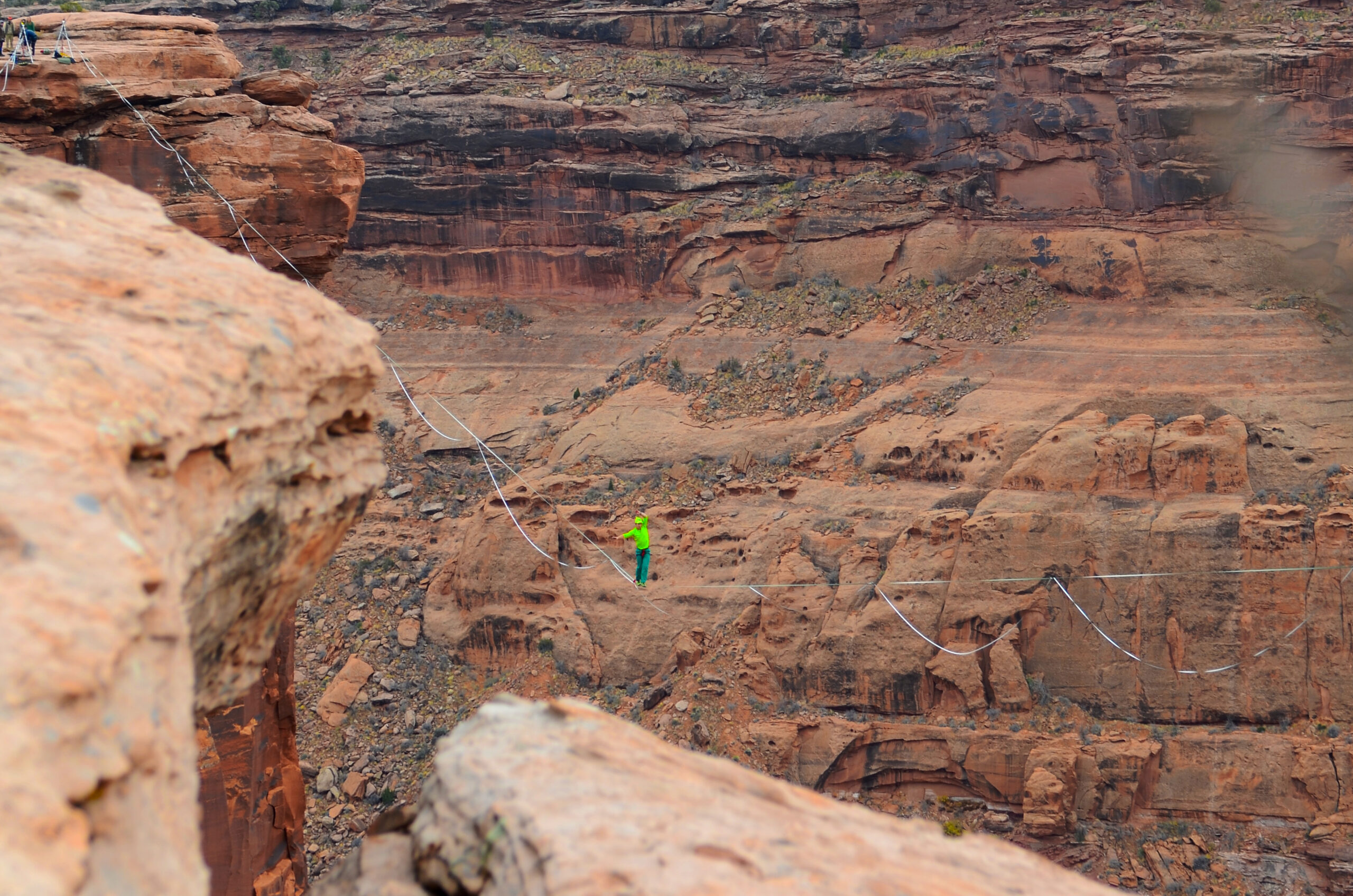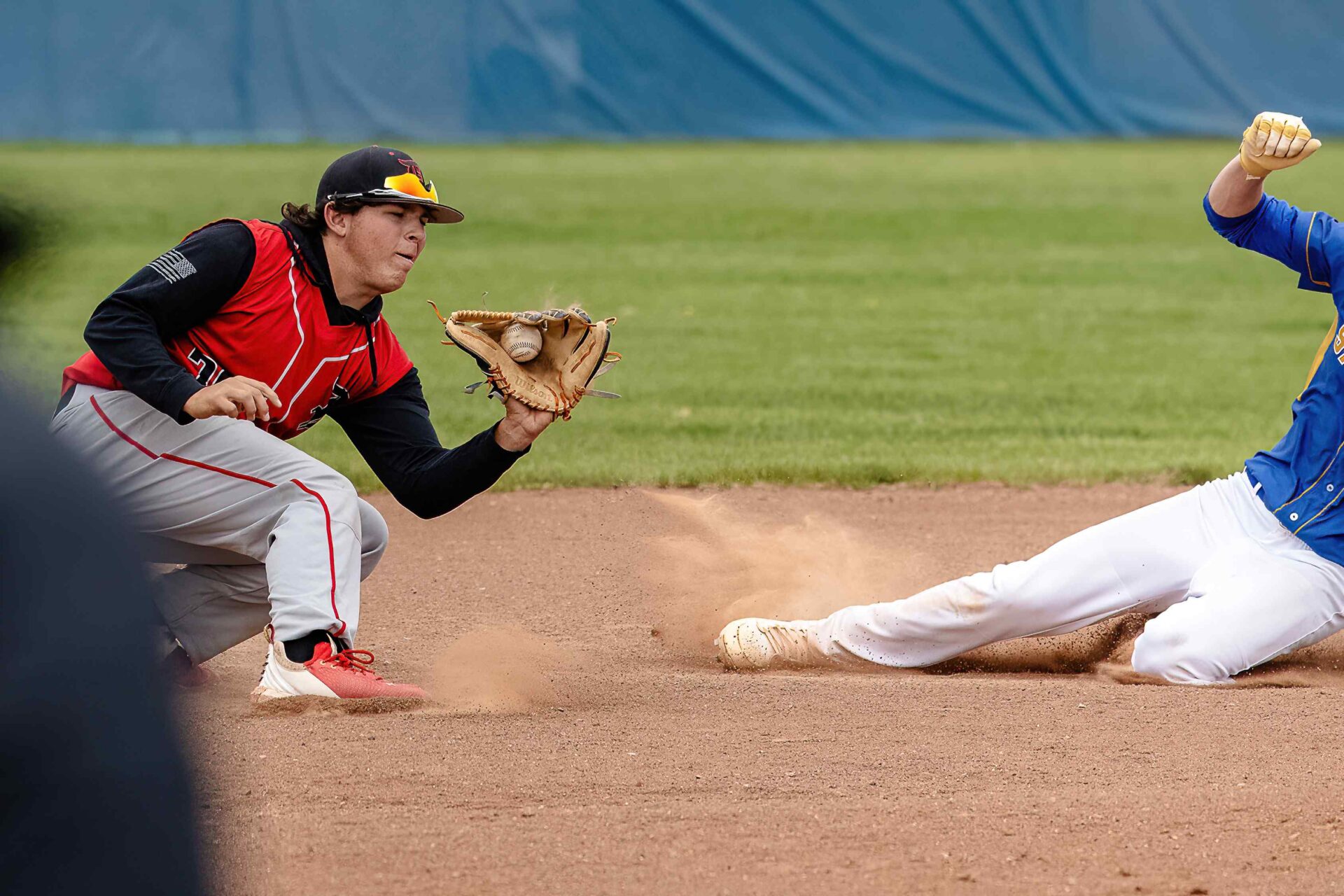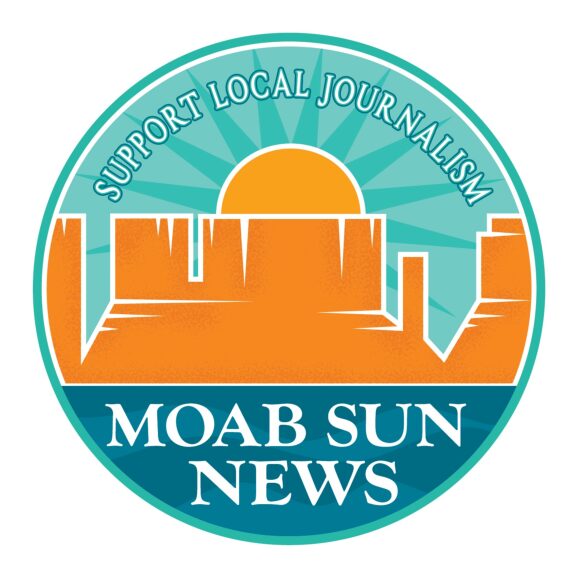Once unofficial, GGBY festival works with the BLM to ensure its future
North of Moab down Mineral Bottom Road is a wide canyon known as the Fruit Bowl. Here, individuals walk across a thin strip of webbing hundreds of feet above the valley floor, safely tethered into the line. Every November, highliners from around the world travel here for the annual GGBY which takes place over Thanksgiving break. This year, Nov. 19-24.
Hosted by Slackline U.S. since 2017, GGBY had small beginnings as an unofficial gathering in 2008 with a handful of friends. At the time, highlining was an obscure sport.
“We just wanted to highline together and have fun. We were not in it to start a festival and never dreamed it would get this big,” said Terry Acomb, who nicknamed the Fruit Bowl after Fruita, Colorado where he’s resided for the past twenty-five years.
He added that Fruit Bowl was meant to be a temporary name, until something “much cooler” was thought of, but the original name stuck.
The Fruit Bowl was an ideal place for a highline gathering. “Everybody could highline side by side because they were in the same alcove. All the lines were at different lengths to walk across, too,” Acomb explained. He bolted the first nine out of ten lines at the Fruit Bowl, crediting Dean Potter as bolting one of them.
This year, GGBY featured 22 highlines along with workshops on activities from acro-yoga to silks – an aerial sport using hanging fabric, a talent show, live music, and a Thanksgiving potluck. Many locals volunteered their time and expertise to the ever-growing event, estimated to bring in anywhere from 300-500 people throughout its duration.
To continuously mitigate the human impact, organizers have worked closely with the Bureau of Land Management since 2013 to ensure future GGBY events and rope access at the Fruit Bowl.
“We’re taking the initiative to work with the overseeing agencies to address the environmental issues and to better facilitate a space for highliners to participate and pursue their athletic endeavors,” said Jesse Faircloth, lead event organizer.

Faircloth’s involvement with the festival began in 2017, the first year GGBY needed a Special Use Events Permit to host the event due to the growing number of participants.
Now, as lead event organizer, Faircloth hopes to continue to address the user group’s growing size by better localizing the event’s impact. This year, his efforts included channelizing the parking lot, helping to install a permanent vault toilet, designating walk-in campground spots, and creating a better-marked trail to the canyon’s rim.
“We are moving in a good direction and, hopefully, are providing the tools and resources needed to succeed,” Faircloth said, adding Slackline U.S. donated the $6,000 towards building the toilet, completed in March 2021.
Many of these initiatives were in conjunction with the BLM, National Park Service, and the Utah Conservation Corps for trail and campsite building.
“As an organizer, I want to lead by example. I want people to see that there can be a beautiful dance between land managers and park services with the different user groups and the general public,” said Faircloth. “We are on the same team.”
In recent years, GGBY worked alongside the BLM to address their concerns over their impact on wildlife below the Fruit Bowl’s rim. Mexican spotted owls, golden eagles, and other raptors nest along the cliff walls and ledges.
To limit human impact on the wildlife, GGBY looked into how much highlines sag below the rim, Faircloth explained. “We’re working with the BLM to provide the specifics of how many meters below the rim certain lines hang and comparing that to when someone’s on it. This is so BLM can have a better clarification of what is considered standard on a highline.”
In the future, this could lead to the elimination of aerial lyra hoops and silks to prevent possible disturbances. At GGBY, equipment for these aerial, acrobatic sports are rigged off highlines and dip below the canyon’s rim.
A significant change that has occurred is that BASE jumping, a once popular activity during GGBY, is now absent from the event.
“The reason why we can’t include BASE jumping at the Fruit Bowl is because of the amount of noise that is created from a canopy [parachute] opening,” Faircloth added, noting that it could distress the local bighorn sheep herd.
Going forward, Faircloth is optimistic about the Fruit Bowl maintaining rope access as a highlining recreation space and believes it can be an example for other locations.
“Highlining is such a young sport,” Faircloth said. “There aren’t yet adequate rigging locations for the growing user group. This kind of rope access is horizontal and not vertical, like rock climbing.”
He hopes that in the future, different entities will continue to work together to ensure all stakeholders are considered in desert recreation.
“Over the past five years, we’ve gained a better understanding of the bigger picture at play. Whereas before, there wasn’t significant consideration of these other stakeholders,” Faircloth said. “It’s a matter of playing the balance game and making sure that everyone has a seat at the table, which includes the wildlife.”




